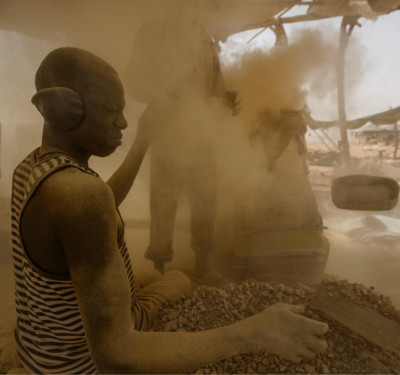Mining exposes Sudanese population to harmful pollutants
Blood samples from people in rural areas of the Blue Nile State in Sudan show harmful levels of chromium
Published online 29 January 2015

Mining for chromium and iron has increased in the Blue Nile State recently, which traditionally relied on agriculture
© Novarc Images / Alamy
People living in Ingessana Hills in the southwest of Sudan’s Blue Nile State are being exposed to high levels of chromium because of pollution caused by mining in the area, according to a new study by researchers in Sudan1.
The Boa and Jam areas of the Blue Nile State are rich in chromium and iron, and have in recent years become important for the mining of these minerals. Although such activities produce pollutants, the extent to which the local population is exposed to environmental hazards is unclear.
To investigate, Ayman Elshayeb, Mohammed Ali and their colleagues collected blood samples taken from 120 healthy adults living in the Bao area of Ingessana Hills, and compared them to samples collected from 120 individuals from Khartoum State, where no mining takes place.
The researchers analysed the concentrations of chromium, iron, copper, and cobalt in the samples. They found that the blood collected from individuals in the Bao area contained significantly higher levels of chromium than samples taken from people in Khartoum State and other areas of Ingessana Hills.
Exposure to chromium can occur in a number of ways, especially by drinking contaminated ground water, eating food enriched in the mineral, and by inhaling dust or fumes produced by chromium mineralisation companies in the area.
Chromium absorbed by the human body is quickly broken down to the ionic form Cr3+. A high blood plasma level of this is associated with a wide variety of diseases and conditions, including skin ulcers, lung cancer, brain damage, encephalitis, emphysema and bronchitis.
The Blue Nile State has an economy based largely on agriculture and livestock, and approximately three quarters of the population inhabit rural areas. Exploitation of mineral resources in the area has been on the rise in recent years.
The authors therefore conclude that it is essential to deliver healthcare services that monitor exposure to such pollutants, especially in the rural areas of Ingessana Hills, where people are most at risk.
“Our bio-monitoring system measures the concentrations of trace elements in the blood and tissues of humans or wildlife, and this should be done periodically,” says Elshayeb. “According to the World Health Organization’s air pollution guidelines, clean [mining] technology can [further] reduce the burden of disease from stroke, heart disease, lung cancer, and both chronic and acute respiratory diseases, including asthma.”Reference
- Ali, A. M., Omar, I. & Elshayeb, A. A.The hazardous impacts of mining activities on population’s health in Blue Nile State - Sudan. J. Local Global Health Sci. 2014, 3 (2013). | article
DOI: 10.1038/qsh.2015.48

